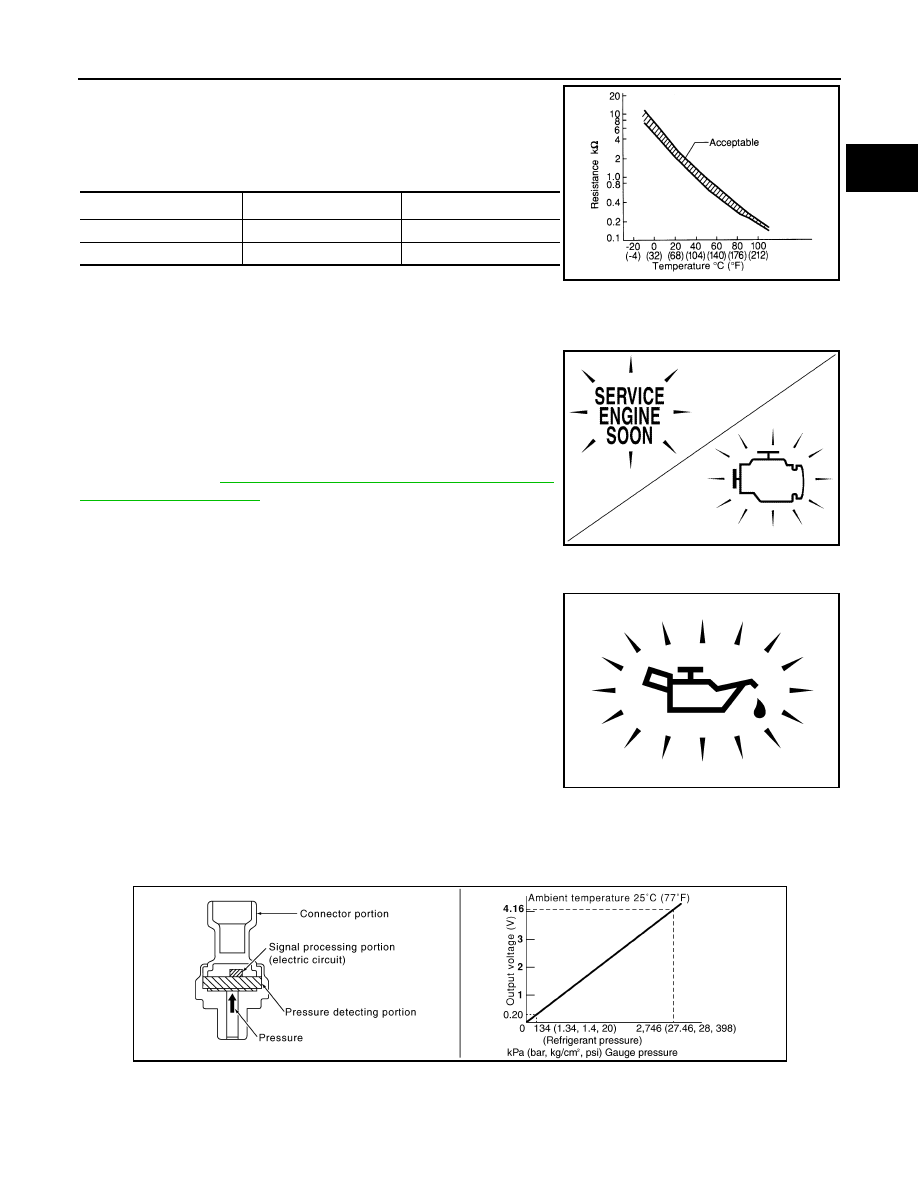Nissan Juke F15. Manual - part 308

COMPONENT PARTS
EC-45
< SYSTEM DESCRIPTION >
[MR FOR NISMO RS MODELS]
C
D
E
F
G
H
I
J
K
L
M
A
EC
N
P
O
Battery temperature sensor is integrated in battery current sensor.
The sensor measures temperature around the battery.
The electrical resistance of the thermistor decreases as temperature
increases.
<Reference data>
*: These data are reference values and are measured between battery temperature
sensor signal terminal and sensor ground.
Malfunction Indicator lamp (MIL)
INFOID:0000000012197655
The Malfunction Indicator lamp (MIL) is located on the combination
meter.
The MIL will illuminate when the ignition switch is turned ON without
the engine running. This is a bulb check.
When the engine is started, the MIL should turn OFF. If the MIL
remains illuminated, the on board diagnostic system has detected an
engine system malfunction.
For details, refer to
EC-81, "DIAGNOSIS DESCRIPTION : Malfunc-
.
Oil Pressure Warning Lamp
INFOID:0000000012197656
Oil pressure warning lamp is located on the combination meter.
It indicates the low pressure of the engine oil and the malfunction of
the engine oil pressure system.
Combination meter turns the oil pressure warning lamp ON/OFF
according to the oil pressure warning lamp signal received from
ECM via CAN communication.
Refrigerant Pressure Sensor
INFOID:0000000012197657
The refrigerant pressure sensor is installed at the condenser of the air conditioner system. The sensor uses an
electrostatic volume pressure transducer to convert refrigerant pressure to voltage. The voltage signal is sent
to ECM, and ECM controls cooling fan system.
Stop Lamp Switch & Brake Pedal Position Switch
INFOID:0000000012197658
Stop lamp switch and brake pedal position switch are installed to brake pedal bracket.
ECM detects the state of the brake pedal by those two types of input (ON/OFF signal).
Temperature [
°C (°F)]
Voltage
*
(V)
Resistance (k
Ω)
25 (77)
3.333
1.9 - 2.1
90 (194)
0.969
0.222 - 0.258
SEF012P
JSBIA1315ZZ
PBIA8559J
PBIB2657E